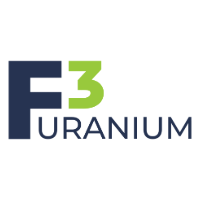
(Bloomberg) — Amazon.com Inc. and billionaire financier Ken Griffin are among the backers anchoring a $500 million investment in small nuclear reactors, a burgeoning technology heralded as the next era for atomic energy.
Most Read from Bloomberg
- Inside the ‘Utopias’ of Mexico City
- How Mexico City Averted All-Out Drought
- Dubai’s Allure to Expats Is Weighing on City’s Infrastructure
- Mexico Seeks to Halve Permitting Time to Attract More Factories
- One City’s Plan to Re-Link a Neighborhood That Robert Moses Divided
The Seattle-based company has signed agreements to develop the new breed of reactors — dubbed small modular reactors, or SMRs — in both Washington and Virginia, investing in in X-Energy, a privately-held advanced nuclear reactor developer.
The financing will help pay for the development of more than 5 gigawatts of new power projects coming online across the US by 2039, X-Energy said in a statement Wednesday.
“It’s going to allow us to build smaller, self-contained power generation near data centers, near where we want in a completely safe and scalable way,” Matt Garman, chief executive officer of Amazon Web Services, said during remarks at the company’s offices in Arlington, Virginia.
Amazon’s announcement comes as technology companies are searching for new energy supplies to power massive data centers needed to run artificial intelligence systems. Alphabet Inc.’s Google announced Monday it was backing the nuclear power and signed an agreement with Kairos Power to construct a series of SMRs that use molten-salt cooling technology.
Data center expansion and other factors are expected to drive electricity demand up 15% to 20% over the next decade, according to the US Energy Department. Data centers could consume as much as 9% of the nation’s electricity generation annually by 2030, up from 4% in 2023, according to a report in May by the nonprofit Electric Power Research Institute.
Amazon has also signed agreements with Washington State-based utility Energy Northwest and Virginia’s Dominion Energy, Inc. to develop SMR projects. Amazon said the reactors — which will be constructed, owned and operated by Energy Northwest — were expected to generate roughly 320 megawatts, with the option to expand to 960 megawatts total.
In Virginia, Amazon said it had signed an agreement with Dominion to explore the development of an SMR project at the utility’s existing North Anna nuclear power station that could bring at least 300 megawatts of power to the region.
Unlike traditional nuclear reactors, which are enormous facilities that take years to build, SMRs can be built at factories, delivered by truck or train, and then assembled on-site, saving time and money. Utilities can install just one or bundle several together, expanding the potential market by including countries that don’t need a big conventional nuclear plant.
Still, the technology hasn’t yet been deployed at scale, commercially.
And SMR’s have their critics, including those who say the economics of nuclear power is flawed no matter what the size of the reactors. NuScale Power Corp. announced in November it was canceling plans to build a series of SMRs in Utah amid surging costs.
Meanwhile, surging demand for power is prompting utilities to build more natural gas-fired plants, undermining lofty environmental goals for both the industry and tech firms.
“Artificial intelligence may be new, but claims that the next revolutionary nuclear technology will solve our energy problems have been around since we first split the atom,” Johanna Neumann, an official with Environment America, said in a statement. “It’s time for Big Tech to recommit to solutions that work and pose less risk to our environment and health, including making data centers as energy efficient as possible and committing them to be powered by new renewable energy sources.”
(Adds comment from Amazon executive in fourth paragraph)
Most Read from Bloomberg Businessweek
- Why OpenAI Is at War With an Obscure Idea Man
- How Starbucks’ Colorful, Sugary Drinks Turned Kids Into Customers for Life
- A Fentanyl Vaccine Is a Long Shot That Just Might Work
- The World’s Central Banks Aren’t Following the Fed’s Lead Anymore
- When a Miracle Cure Is Left on the Shelf
©2024 Bloomberg L.P.
Original Source: https://finance.yahoo.com/news/ken-griffin-amazon-invest-next-125000817.html








